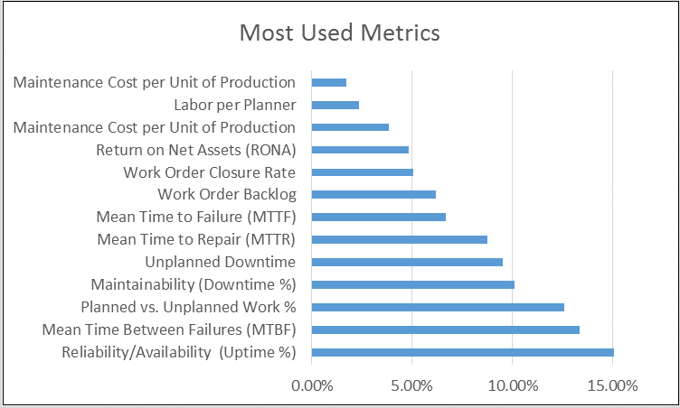The LNS Research Asset Performance Management (APM) survey has clearly shown by almost 50%, that the number-one goal to improving asset performance within an organization is to have better operational performance. So, now the questions to ask and discuss are:
- How do I, as an APM software user, prove that our organizations investments in the APM landscape are working?
- How do I prove this by providing visibility within the department all the way up at the senior level of the organization to make sure this is the case?

The good news is many are heading in the right direction.
Most organizations in our APM survey report, 62%, plan to or currently have real-time visibility into APM metrics. It’s important for Maintenance and Reliability Managers to understand metrics are role specific. Depending on what you do and how you are measured will define the best metrics to show where the opportunities may be to improve. In some cases there may be opportunities to benchmark against similar plants or groups within the organization, region, or entire industry. For example, metrics include plant/grid reliability, planned vs. unplanned work, and Return on Net Assets. As assets become Smart Connected Assets, data availability will increase significantly; enabling an increase in real time monitoring, from the plant/grid level to the enterprise level. 
Which Metrics to Use?
The votes are in! Below are the results for the metrics used when measuring performance with APM. This can serve as a good benchmark to understand and compare at your organization. Obviously it’s not a popularity contest, Maintenance and Reliability Managers shouldn’t be second guessing themselves if the metrics used don’t match exactly. However, this does provide a good context if you have not considered some of these metrics and can be used as an opportunity to learn about them more. LNS Research created a great Research Spotlight on the topic, “Understanding the Full Scope of APM Metrics.”
How Do I Increase Senior Management Visibility?
It all starts with working internally to make sure maintenance and reliability managers are on the same page with the “customers,” aka senior management who are interested in this information. Different metrics will have varying levels of value depending on what level and part of the organization you are trying to communicate.
In the case of raising visibility with senior management, maintenance and reliability managers will want to use metrics that indicate overall productivity of the workforce, assets, or connection to financials. Examples include Overall Equipment Effectiveness (OEE) to communicate availability, quality and performance. Availability is a good indicator of asset health, and Maintenance Cost per Unit of Production is for a financial understanding put in production terms.
Using metrics will help gauge whether an organization is continuously improving, peaking, or being held back with ineffective business processes. Setting the right expectation and communicating the good, bad, and ugly with senior management will ensure Maintenance and Reliability Managers will get the attention they need to continue to invest in APM initiatives.
Understand the capabilities of twenty of the leading vendors in the APM space by downloading our APM Solutions Section Guide. The guide contains comparison charts for the factors listed above and the detailed profiles of the twenty vendors ranging from automation companies, to enterprise software providers and includes many specialized APM solutions as well.